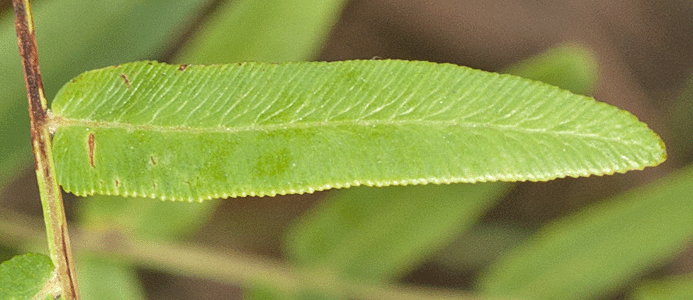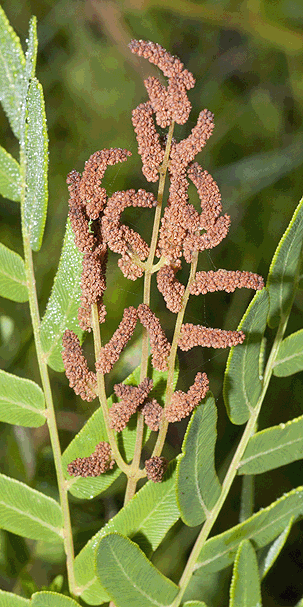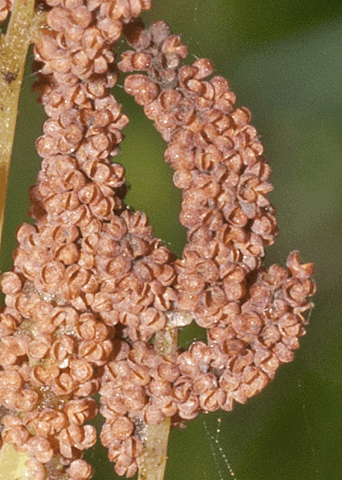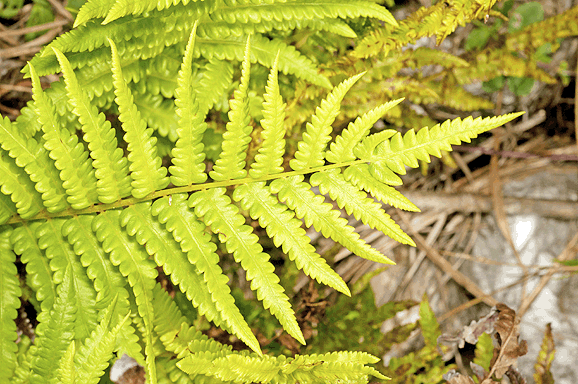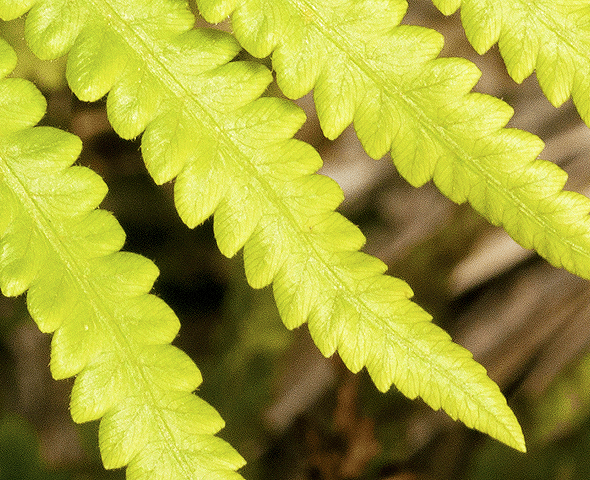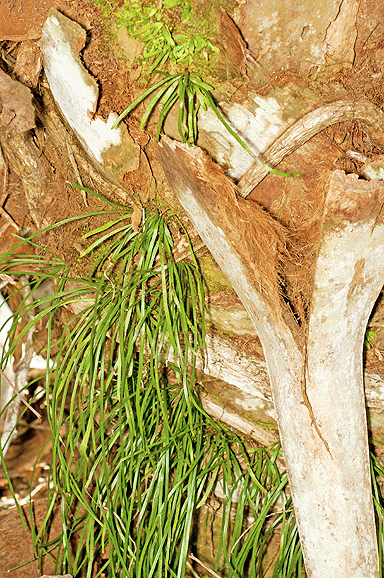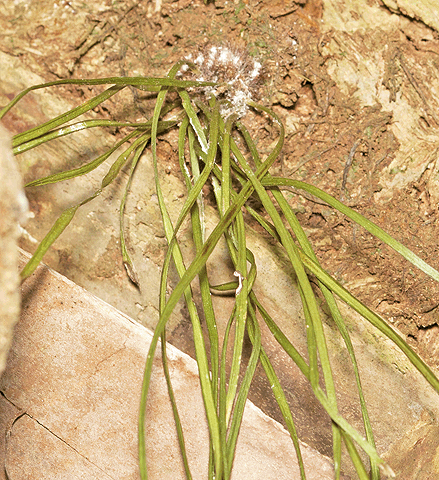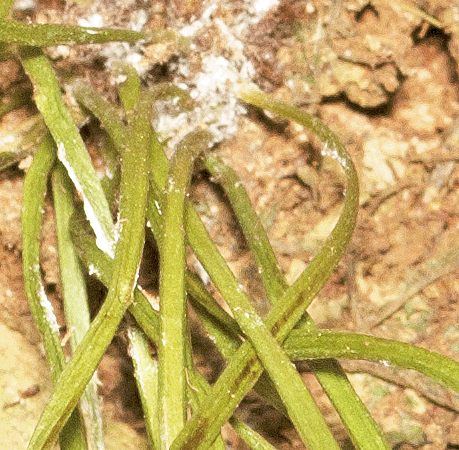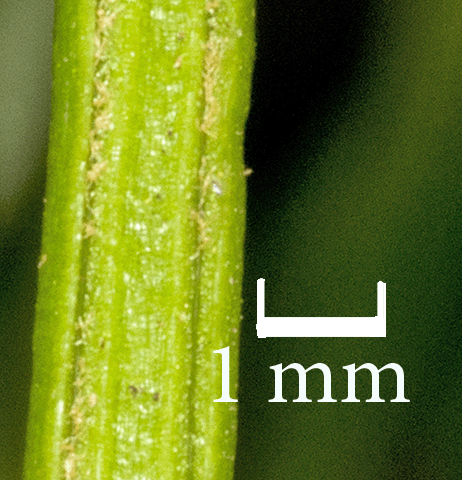Pteridophytes (Ferns) in the Christopher B. Smith Preserve
Pteridophyte Characteristics: Pteridophytes are vascular plants (plants with xylem and phloem). Their leaves range from small and simple to large broad fronds with branched veins. Ferns have roots and sometimes true stems. They have alternation of generations with an inconspicuous, short-lived gametophyte (sexual) stage, and a conspicuous longer-lived sporophyte (asexual) stage. Ferns do not have flowers or seeds; they reproduce via spores. Thirty-five plant families and 568 genera are in this plant division. Members include terrestrial ferns, aquatic ferns, and epiphytic ferns.
Interactions in the Preserve: Like other plants, pteridophytes convert energy of sunlight to energy other organisms can use. The conversion process is photosynthesis. In addition, pteridophytes provide food and habitat for other organisms. Terrestrial fern roots hold soil in place which prevents soil erosion. Epiphytic ferns typically live at the base of palm fronds, where their roots help trap and hold forest debris that eventually becomes soil.
Family |
Species Name |
Common Name |
Blechnaceae |
Blechnum serrulatum |
|
Dryopteridaceae |
Nephrolepis multiflora |
|
Lygodiaceae |
Lygodium microphyllum |
|
Polypodiaceae |
Phlebodium aureum |
|
Polypodiaceae |
Pleopeltis polypodioides var. michauxiana |
|
Pteridaceae |
Acrostichum danaeifolium |
|
Osmundaceae |
Osmunda regalis |
|
Thelypteridaceae |
Thelypteris palustris |
|
Vittariaceae |
Vittaria lineta |
Family Blechnaceae
Blechnum serrulatum Swamp Fern
|
Family Dryopteridaceae
Nephrolepis multiflora Asian Sword Fern
|
Family Lygodiaceae
Lygodium microphyllum Old World Climbing Fern / Climbing Maidenhair fern
|
Family Polypodiaceae
Phlebodium aureum Golden Polypody
|
Pleopeltis polypodioides var. michauxiana Resurrection Fern
|
Family Pteridaceae
Acrostichum danaeifolium Leather Fern
|
Family Osmundaceae
Osmunda regalis Old World Royal Fern
|
Family Thelypteridaceae
Thelypteris palustris Marsh Fern
|
Family Vittariaceae
Vittaria lineata Shoestring Fern
|

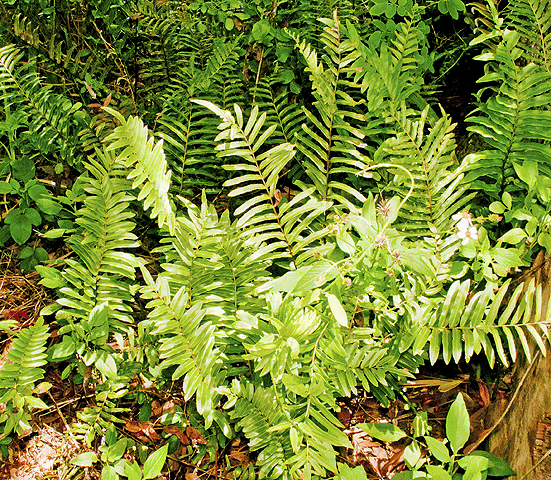


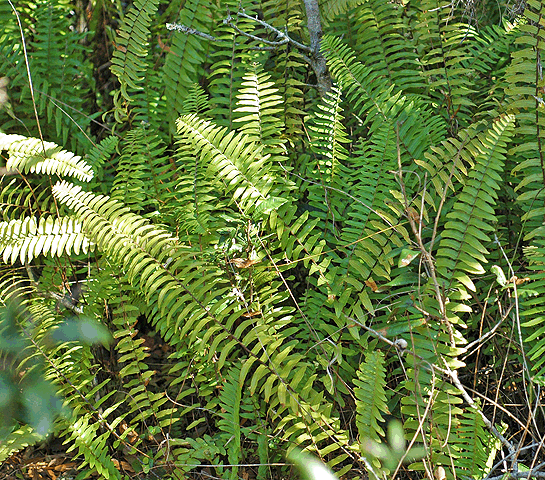
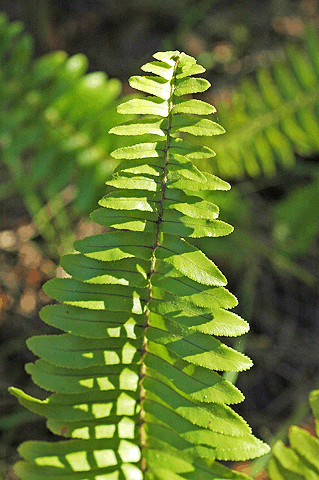
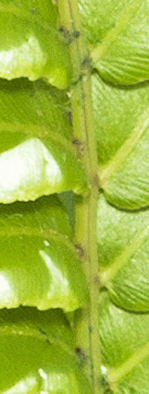
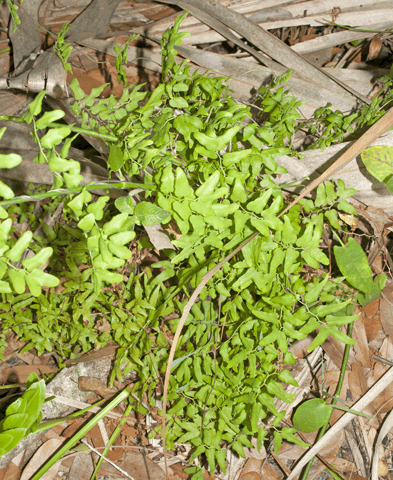
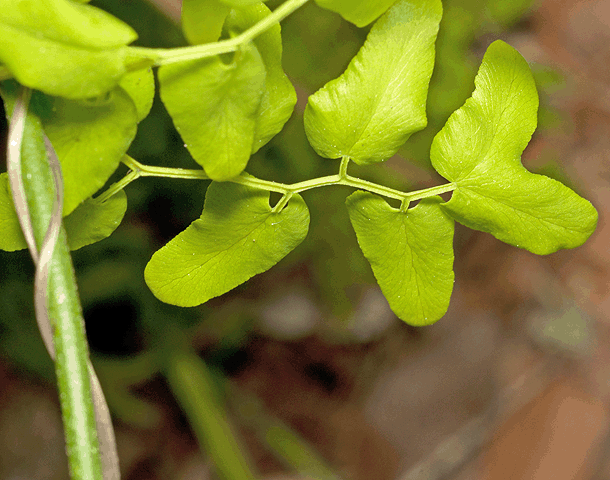

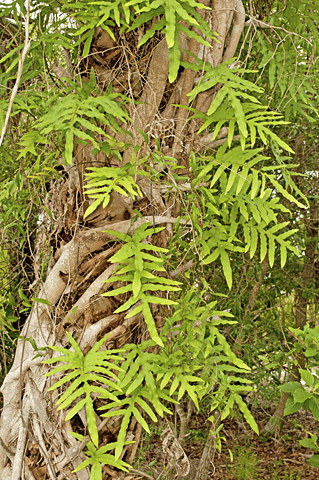
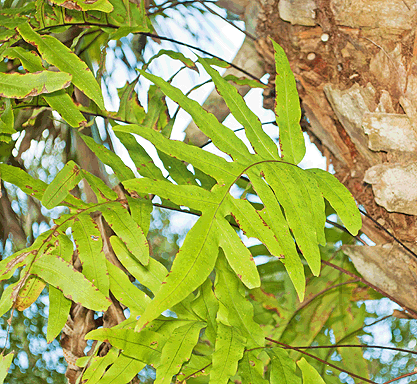
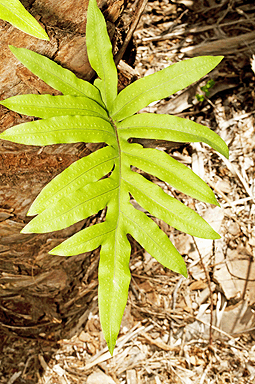
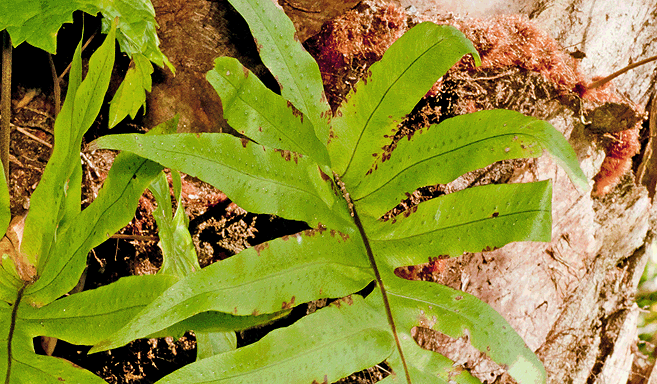
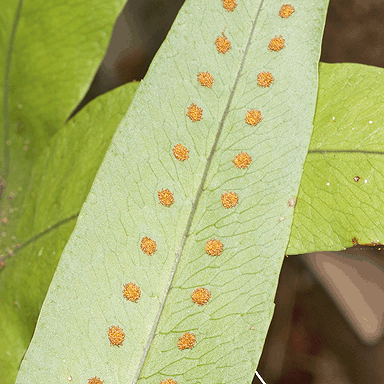
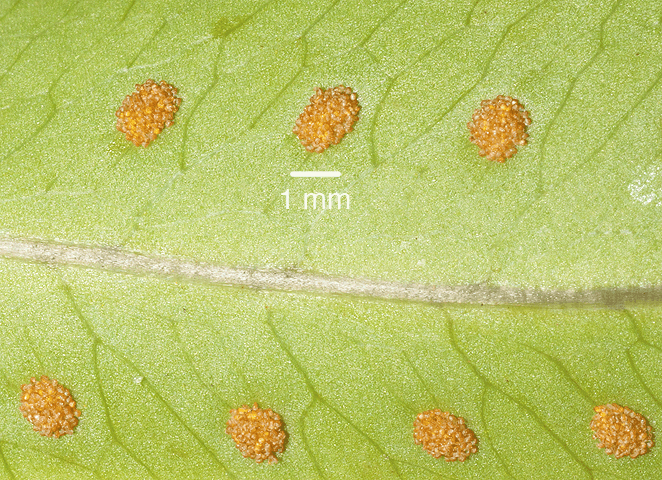
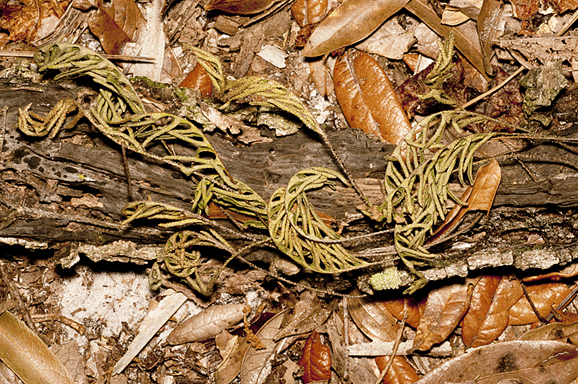 This species lives from Florida north to New York and west to Texas.
This species lives from Florida north to New York and west to Texas. 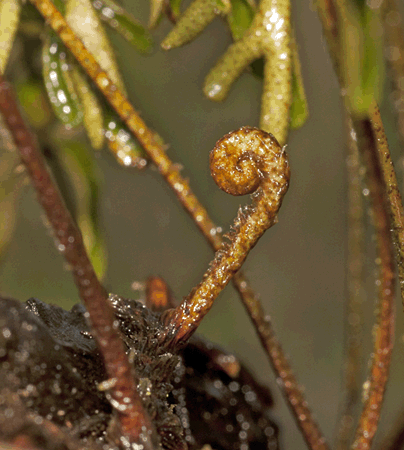

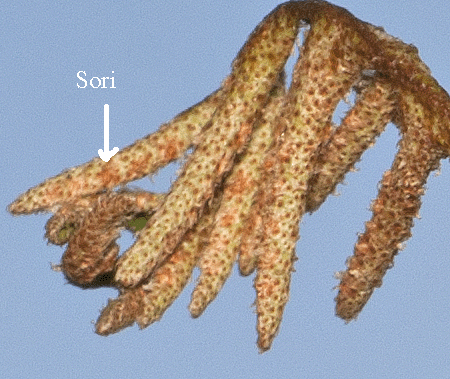 Resurrection fern has a long stem and 10 to 30.5 cm long evergreen fronds. Fronds are made of small, rounded, oblong blades. Spores are in clusters (sori) on the bottom sides of the blades. Sori look like dark scales.
Resurrection fern has a long stem and 10 to 30.5 cm long evergreen fronds. Fronds are made of small, rounded, oblong blades. Spores are in clusters (sori) on the bottom sides of the blades. Sori look like dark scales.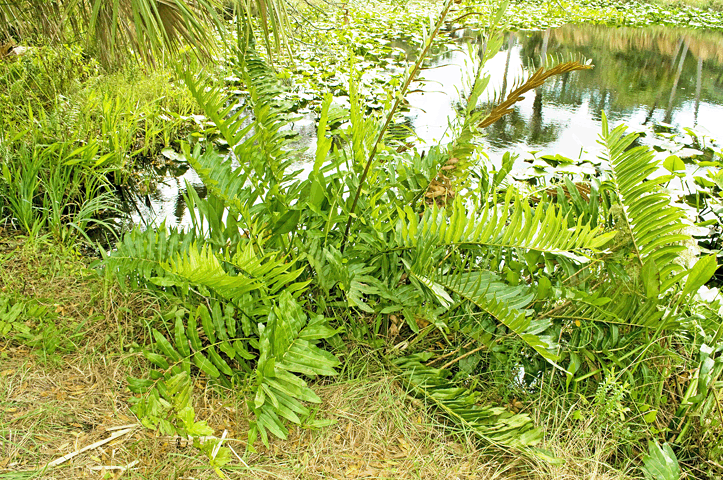
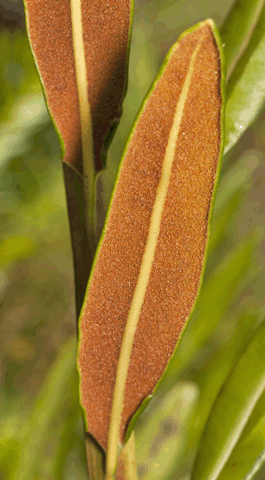
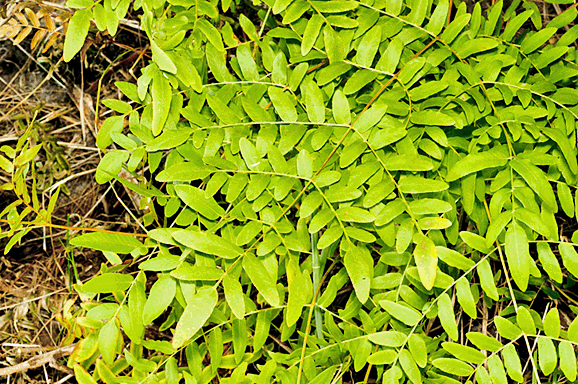
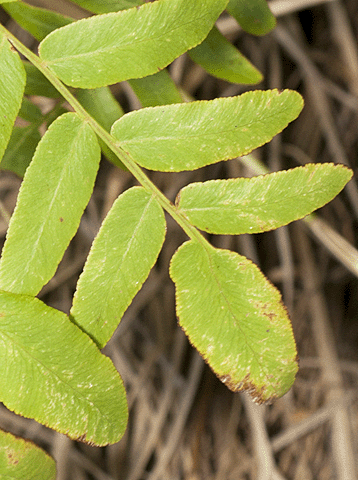 Osmunda regalis is a non-native, deciduous fern that normally grows in bogs and along stream banks. Its width is equal to its height: .6 to .9 m. It grows in partial shade to full shade and produces separate fertile and sterile fronds.
Osmunda regalis is a non-native, deciduous fern that normally grows in bogs and along stream banks. Its width is equal to its height: .6 to .9 m. It grows in partial shade to full shade and produces separate fertile and sterile fronds. 